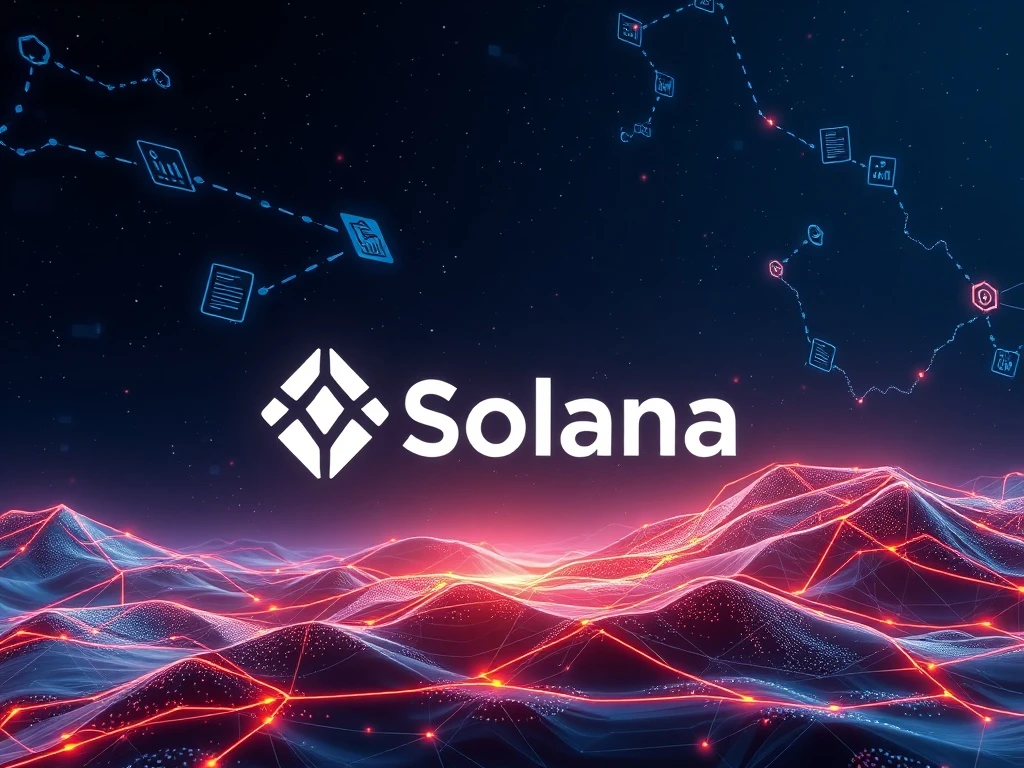Solana ETF Breakthrough: Cboe BZX Files Invesco Galaxy Application with SEC for Historic Approval

The cryptocurrency world is buzzing with excitement as Cboe BZX Exchange takes a monumental step by submitting an application to the U.S. Securities and Exchange Commission (SEC) for the Invesco Galaxy Solana ETF. This move could revolutionize how investors access Solana (SOL), bringing institutional-grade exposure to one of the fastest-growing blockchain ecosystems.
What Does the Solana ETF Application Mean for Investors?
The proposed Invesco Galaxy Solana ETF aims to track the spot price of SOL, offering investors direct exposure to Solana’s thriving ecosystem. Here’s why this matters:
- Regulated Access: Investors can gain exposure to Solana through traditional financial infrastructure.
- Staking Rewards: The ETF includes staking benefits, leveraging Solana’s proof-of-stake mechanism for potential enhanced returns.
- Market Liquidity: Cboe BZX highlights SOL’s mature and liquid market as a key factor supporting the ETF.
How Does the SEC Approval Process Work for Crypto ETFs?
The SEC follows a two-part process for ETF approvals:
- Exchange Approval: Cboe BZX must first secure SEC approval to list the ETF.
- Fund Registration: Invesco and Galaxy Digital then finalize the fund’s registration.
Recent delays in Grayscale’s Solana Trust ETF approval suggest a cautious SEC approach, but the accelerated approval of Bitcoin and Ether ETFs in June 2025 offers hope.
Why Is Institutional Interest in Solana Growing?
Solana’s scalable infrastructure and DeFi capabilities make it a standout choice for institutional investors. Key factors driving interest:
- Hybrid Expertise: Invesco’s fund management combined with Galaxy Digital’s blockchain proficiency.
- Competitive Landscape: Multiple Solana ETF applications signal confidence in SOL’s utility.
- Market Readiness: SOL’s liquidity and transparency meet institutional standards.
What Challenges Could the Solana ETF Face?
While the filing is a significant milestone, potential hurdles remain:
- Regulatory Scrutiny: The SEC may scrutinize market volatility and custody solutions.
- Unique Risks: Layer 1 blockchain tokens like SOL could face additional regulatory questions.
- Timeline Uncertainty: Approval timelines are unpredictable, as seen with Grayscale’s delayed decision.
Conclusion: A Pivotal Moment for Solana and Crypto ETFs
The Invesco Galaxy Solana ETF application marks a bold step toward mainstream crypto adoption. If approved, it could solidify Solana’s position alongside Bitcoin and Ethereum in the institutional investment landscape. While regulatory hurdles remain, the growing demand for crypto ETFs underscores the transformative potential of blockchain technology.
Frequently Asked Questions (FAQs)
- What is the Invesco Galaxy Solana ETF?
The ETF is a proposed fund tracking Solana’s spot price, offering investors regulated exposure to SOL. - When was the Solana ETF application submitted?
Cboe BZX filed the application on July 29, 2025. - Does the Solana ETF include staking rewards?
Yes, the ETF plans to incorporate staking benefits from Solana’s proof-of-stake mechanism. - How does this compare to Bitcoin and Ethereum ETFs?
The SEC’s approval of Bitcoin and Ether ETFs sets a precedent, but Solana’s unique features may require additional scrutiny. - What are the risks of investing in a Solana ETF?
Risks include regulatory delays, market volatility, and custody challenges.









